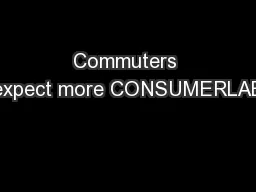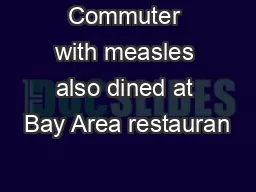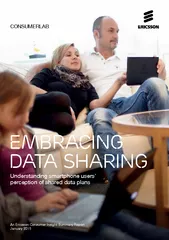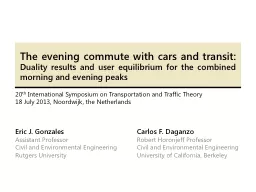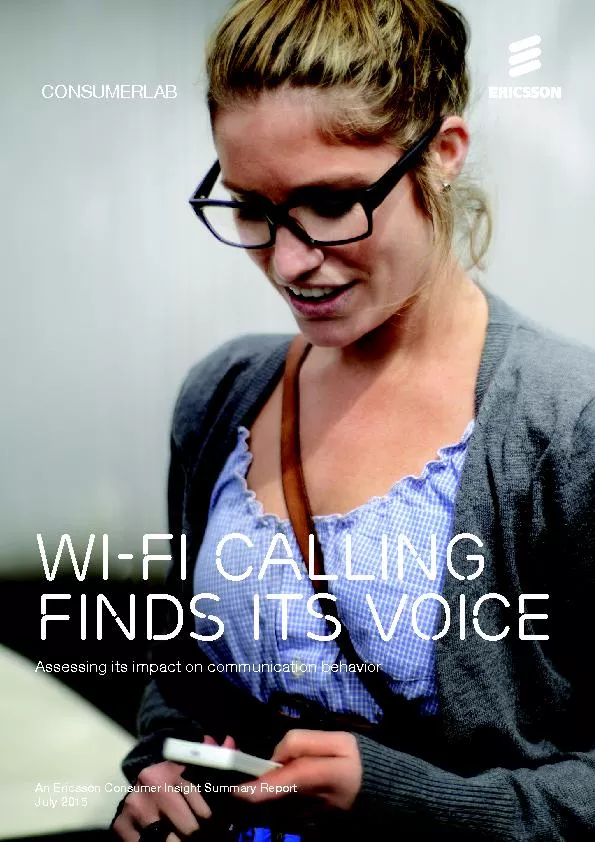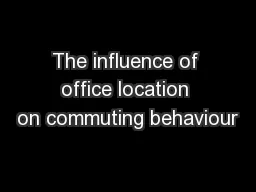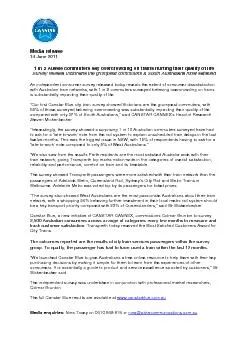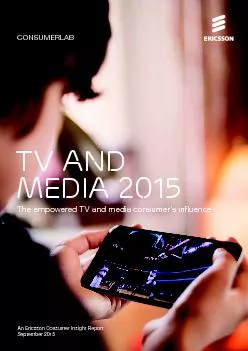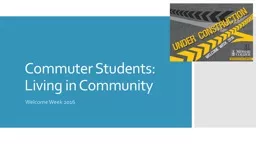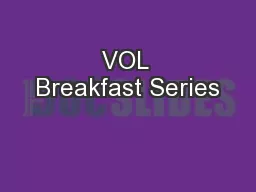PDF-Commuters expect more CONSUMERLAB
Author : min-jolicoeur | Published Date : 2016-11-03
ERICSSON CONSUMERLABCOMMUTERS EXPECT MORE This Ericsson ConsumerLab report explores the commuter experience when using public transport bus train and metro and personal
Presentation Embed Code
Download Presentation
Download Presentation The PPT/PDF document "Commuters expect more CONSUMERLAB" is the property of its rightful owner. Permission is granted to download and print the materials on this website for personal, non-commercial use only, and to display it on your personal computer provided you do not modify the materials and that you retain all copyright notices contained in the materials. By downloading content from our website, you accept the terms of this agreement.
Commuters expect more CONSUMERLAB: Transcript
Download Rules Of Document
"Commuters expect more CONSUMERLAB"The content belongs to its owner. You may download and print it for personal use, without modification, and keep all copyright notices. By downloading, you agree to these terms.
Related Documents

